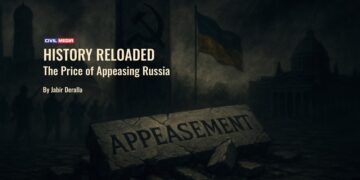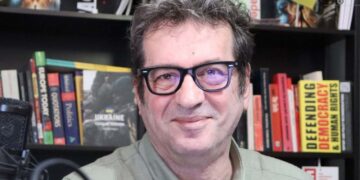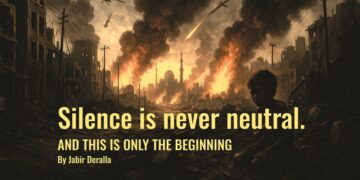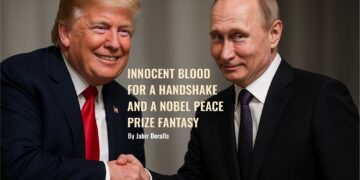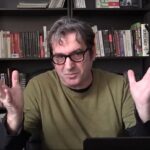On the afternoon of April 12, 2016, people began to gather in front of the Special Public Prosecutor’s Office in Skopje. The spark that ignited the protests was the decision by then-President Gjorge Ivanov to grant a blanket pardon to all politicians under investigation by the widely supported Special Prosecutor’s Office.
That moment marked the beginning of the Colorful Revolution.
“No Justice – No Peace,” “Jail for the Mafia,” and “Resign!” echoed through the streets that evening and continued for months, until the fall of Nikola Gruevski’s authoritarian regime, which had ruled North Macedonia for 11 years.
That night, the peaceful protest escalated when demonstrators smashed the glass facade of the so-called “People’s Office” of the President near the former Rekord building in Skopje. It was arguably the only violent incident during the entire Colorful Revolution.
Crowds flooded in from all directions. Demonstrators marched toward the government building on Ilindenska Boulevard, demanding Gruevski’s resignation. Eventually, the sea of people headed toward the headquarters of his party, VMRO-DPMNE.
There, we saw what became strikingly clear: the party’s building was the most heavily guarded site in the country that night. The President’s “people’s” office was protected by just a few police officers. The government building had a slightly bigger police presence. But the VMRO-DPMNE fortress, in the very heart of the capital, was sealed off in a wide perimeter—lined with riot police, armored vehicles, and machine gun turrets cloaked with tarps.
The party headquarters of Europe’s richest ruling party—located in one of the continent’s poorest countries—was and remained the most protected zone in the country. No one was allowed near the building, a glaring symbol of kleptocracy and structural violence. Heavily militarized police units were deployed to ensure not a single drop of the revolution’s iconic paint grenades could touch it. You could protest anywhere—except in front of the party headquarters. A chilling reminder that the state had long been hijacked by the party, and no longer served the people.
In the days that followed, the regime’s full arsenal came into play: police brutality, arbitrary arrests, smear campaigns, and hate speech—violence in every form—became the daily experience of hundreds of thousands across the country.
But the message of the Colorful Revolution broke through. It resonated far beyond our borders, inspiring people across the world. To this day, its spirit remains a nightmare for authoritarian regimes.
The Colorful Revolution became—and remains—a symbol of nonviolent civic resistance against a captured state. It was a unifying idea that crossed all lines—ethnic, religious, cultural, gender, social, and political. It stood, and still stands, as a civic uprising against tyranny, a fight for democracy, equality, justice, and freedom. Let them spit if they wish—the Colorful Revolution is greater than any threat or delusion. It lives on as both testimony and warning, still uniting those who dare to dream of freedom.
Nine years later, we’re still grappling with the shadows of the past and the new masks of the old regime. But the Colorful Revolution stands as an indestructible testimony—not because the colors and scenes haven’t faded from memory, but because the idea of justice, equality, and freedom never surrendered.
It wasn’t a moment—it was a movement. Not an event, but a legacy. No regime can erase the courage of the people who raised their voices.
The Colorful Revolution is not in the past. It remains a lasting reminder that the people have power, and that resistance always begins with a single step—a step toward freedom.


